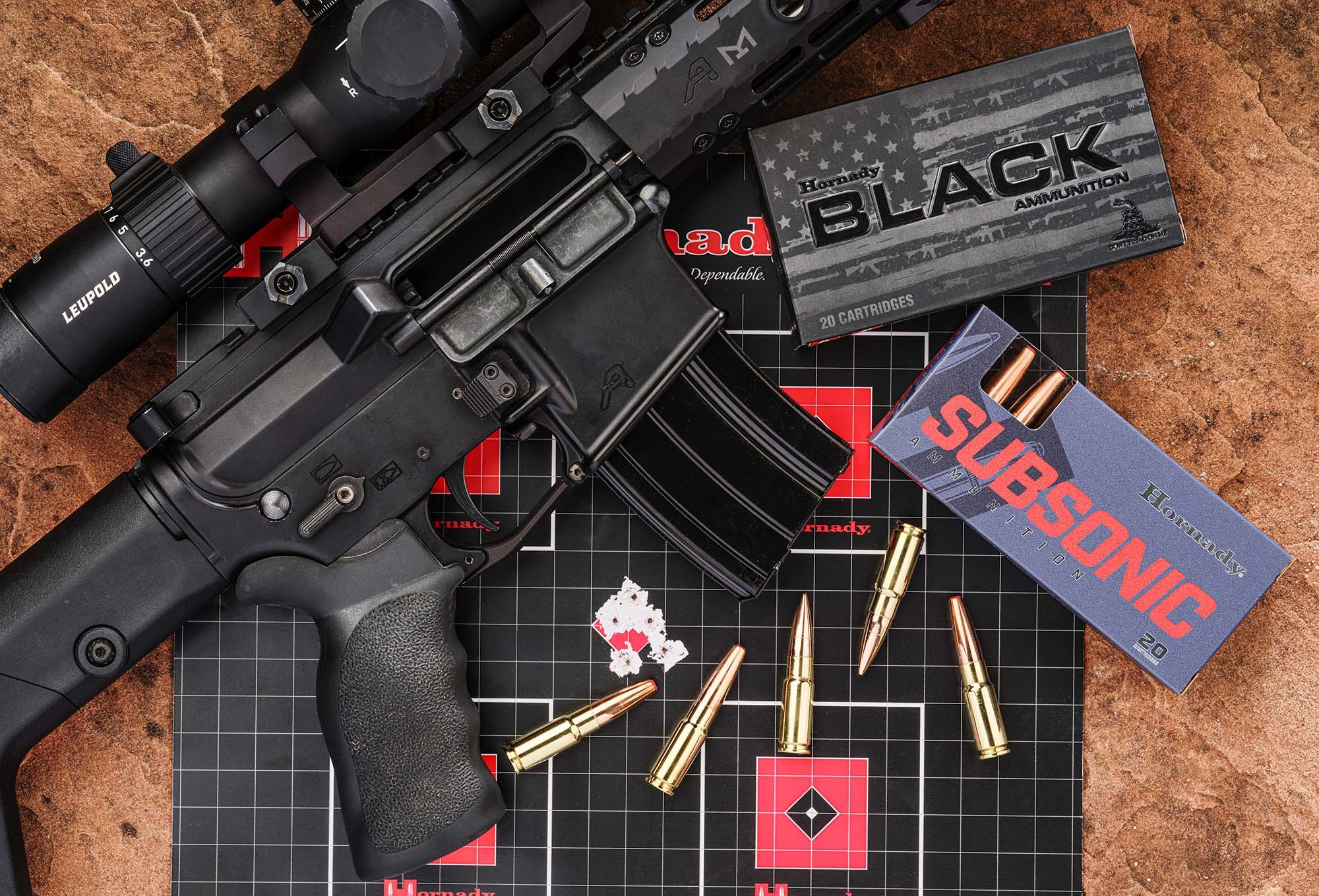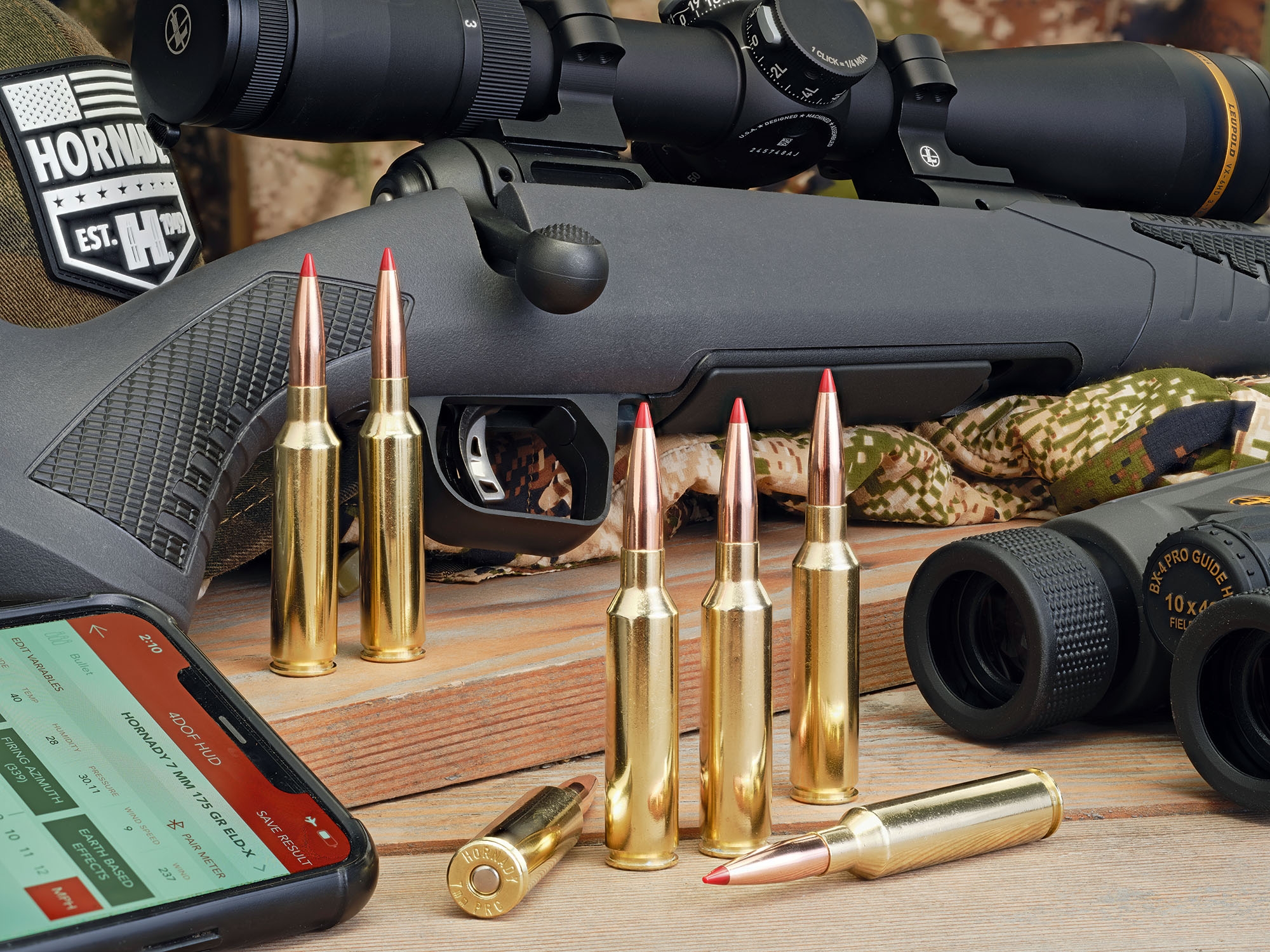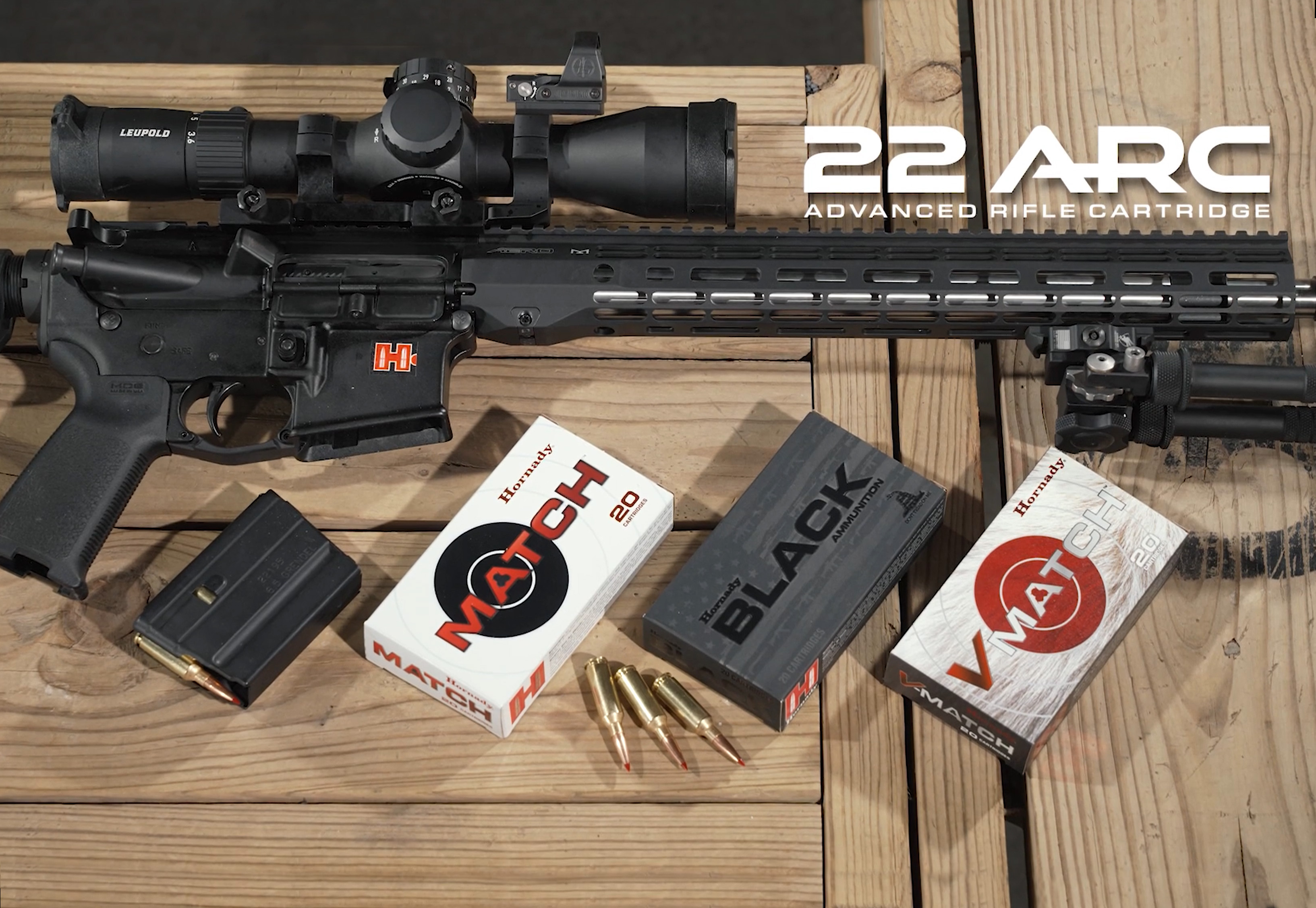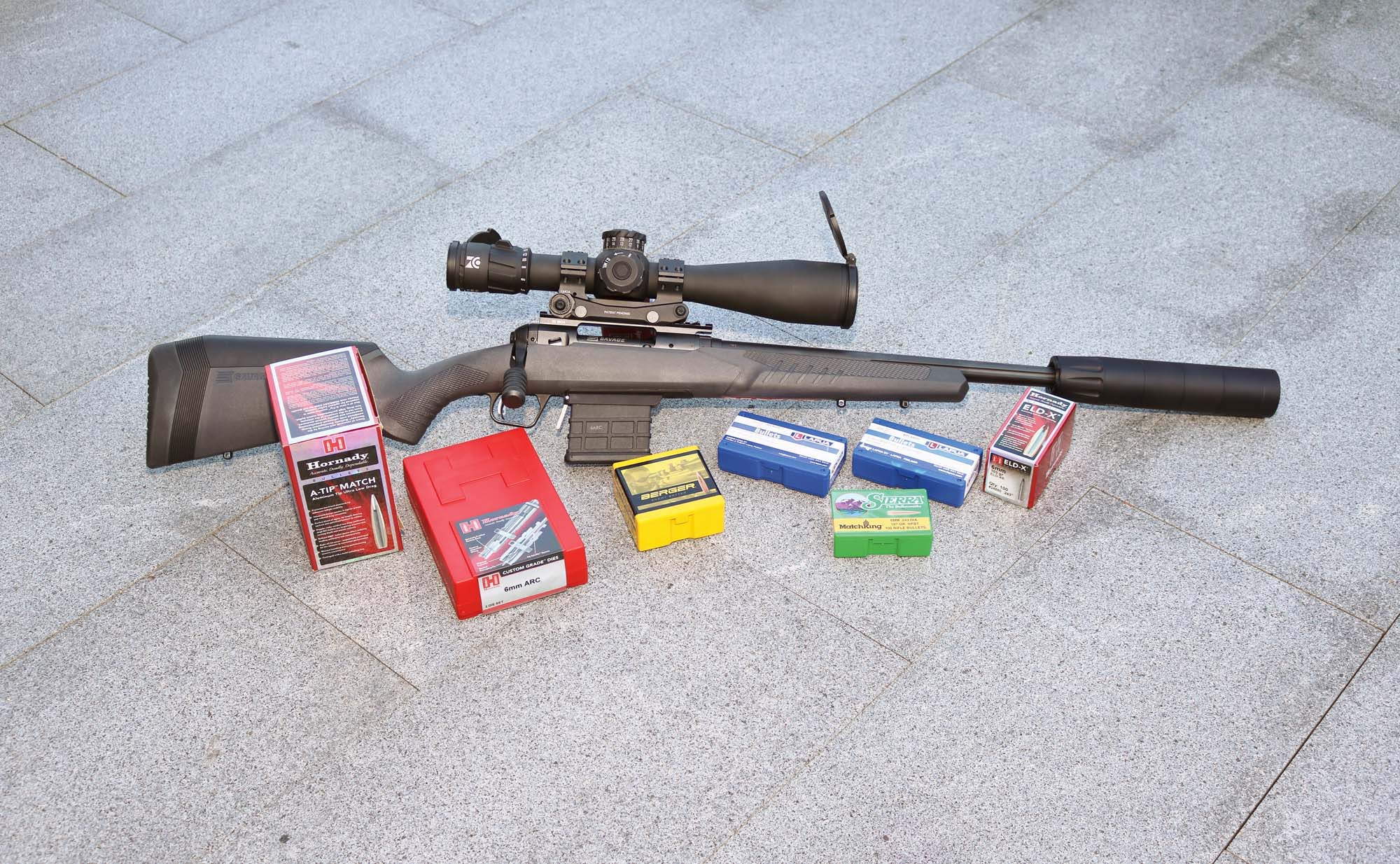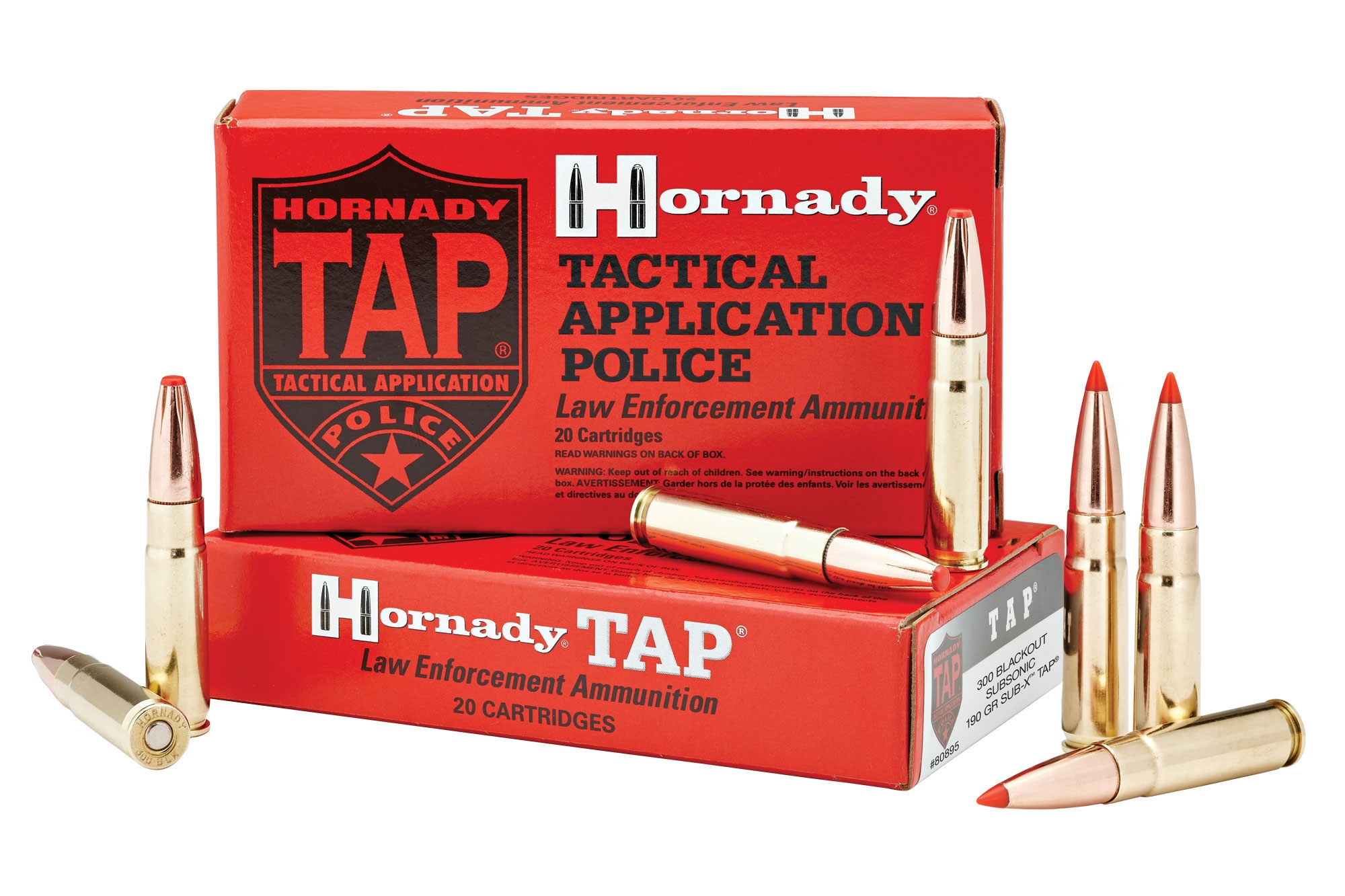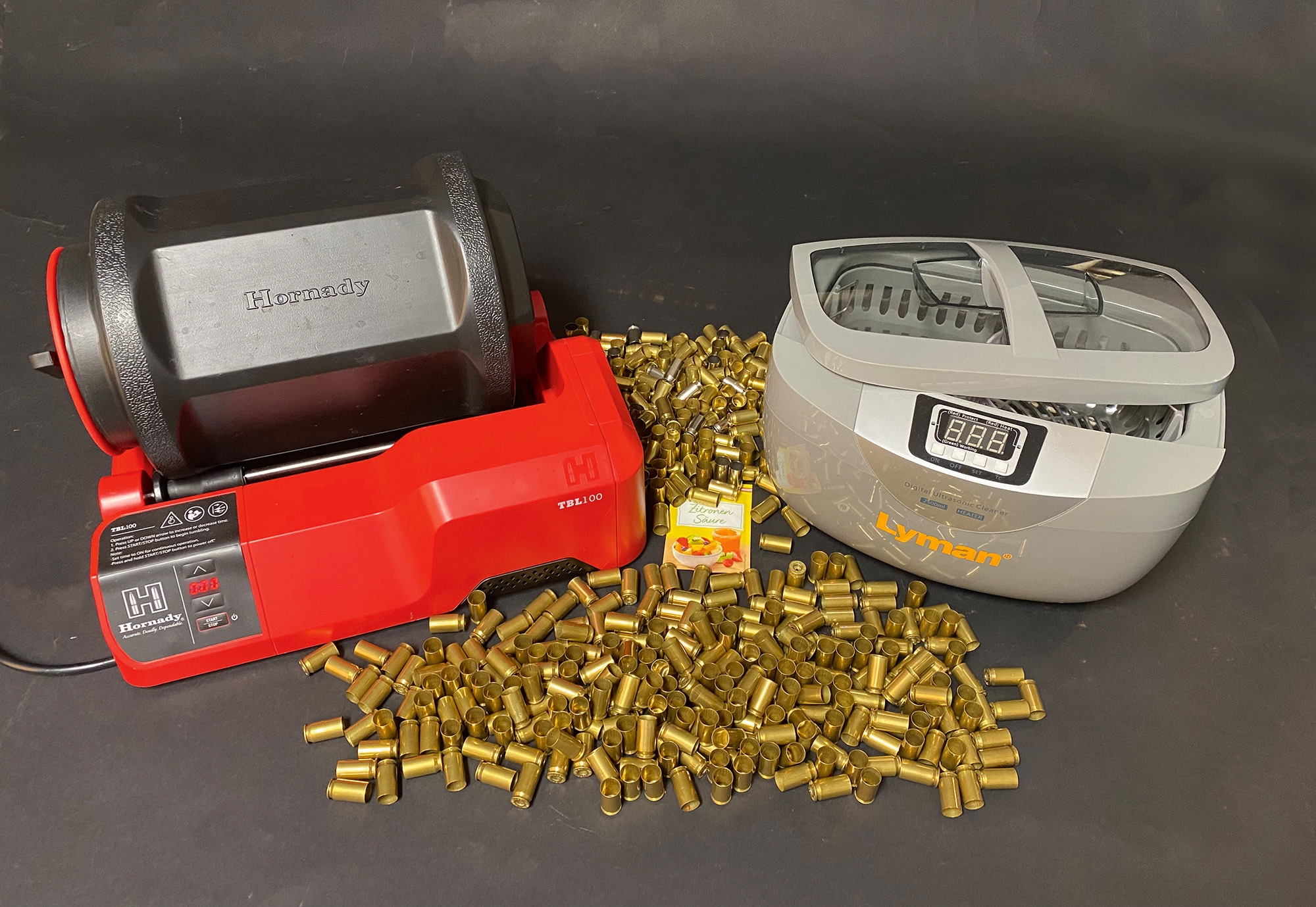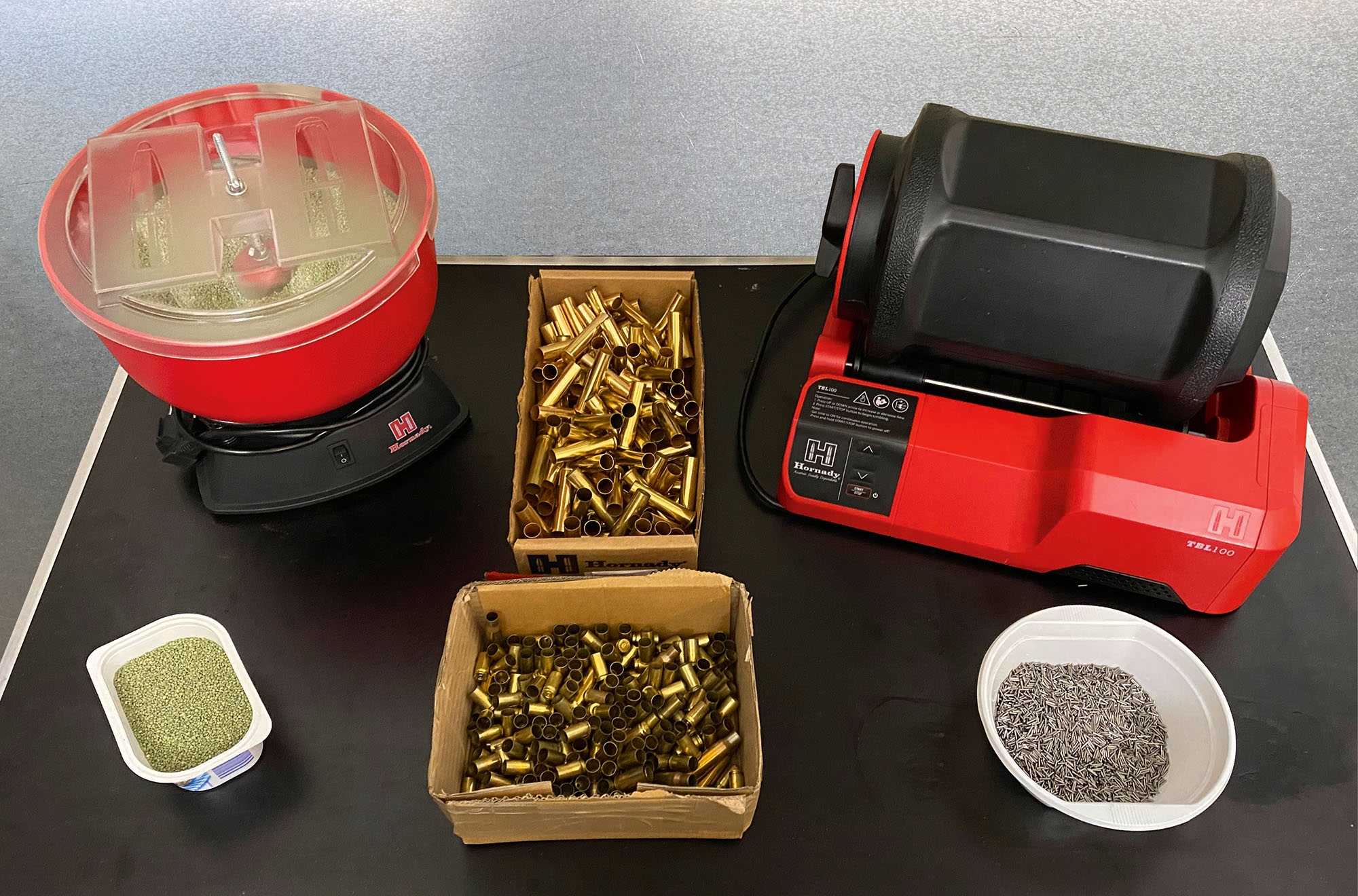Since 2011, anyone looking for alternatives to the .223 Remington in AR-15s or the 5.56x45 mm NATO in M4s has often heard something martial, such as the .300 AAC Blackout. A 7.62 mm bullet inserted in a cut down .223 Remington casing – and that's it. What seems simple, like many simple solutions, required some thought, because M4 or AR-15 magazines and bolts can still to be used. Only the barrel is replaced. Depending on the barrel length, a gun converted in this way fires around 1,800 joules. This is roughly equivalent to the performance of a 5.56x45 mm NATO. This also raises the question: what's the point? The answer lies in the past. Around 1960, it was clear to all military leaders that equipping rapid-fire rifles would greatly increase the need for ammunition in combat. The modern 5.56 mm was supposed to weigh less than old WW2 cartridges, have the flattest trajectory possible for a good 300 meter range, to be controllable in full-auto thanks to its lower power, and have low manufacturing costs. The concept worked until conflicts with large troop deployments became less and less frequent, and asymmetric conflicts more and more frequent.
An innovative cartridge: the road to the 6 mm ARC from Hornady
Instead of masses of mediocre rifle-trained mechanized infantrymen disembarking after heavy bursts of fire and storming through enemy lines, smaller special units emerged. Not only in Afghanistan, fighters ambushing with WW2-vintage repeaters had the advantage at long range when firing at opponents whose rifle in 5.56x45 mm NATO was only supposed to satisfy the training level of an unwilling conscript. Neither range nor accuracy was sufficient beyond 400 meters. Snipers became more important and all-round armament came into focus. It soon became clear that even if light, short, rapid-fire infantry weapons with reduced-power ammunition are sensible, especially with regard to urban operations, troops would be ill-equipped with them should they encounter motivated fighters in open terrain who could use long ranges accurately, and should they lack support from medium caliber weapons or drones. The search for new calibers began. These were to be fired from already introduced rifles with just some modification, have a longer range and better terminal ballistics.
The CMMG AR-15 MK 4 test weapon in 6 mm ARC
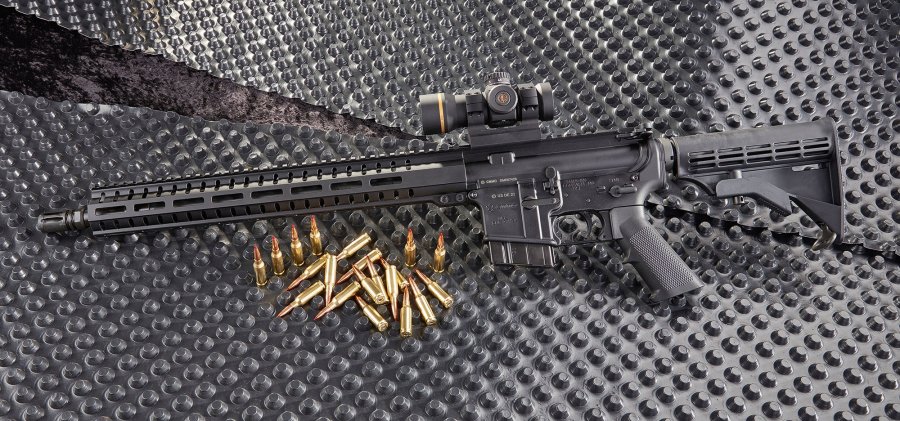
| Model: | CMMG AR-15 MK 4 |
| Price: | 1,749 euro |
| Caliber: | 6 mm ARC |
| Magazine Capacity: | 10 + 1 rounds |
| Dimensions (LxWxH): | 900*x63x180** mm |
| Barrel Length: | 450 mm |
| Barrel Twist: | 190 mm (7.5") RH |
| Trigger Pull Weight: | approx. 3.000 g |
| Weight: | 2,975 g |
Notes: *= with extended stock, **= without sights, full length handguard, continuous Picatinny rail over handguard and upper receiver. | |
7.62x51 mm NATO? 5.56 mm Rifles like the M4 and G 36 were, to put it bluntly, something good for an average combat distance of less than 100 meters. Desert warfare scenarios were not ideal for them. Even if more effort and money had been spent on it, the given cartridge is nowhere near the performance of the 7.62x51 mm NATO. However, new AR-10s or old G 3s can't be introduced "just like that" throughout NATO.
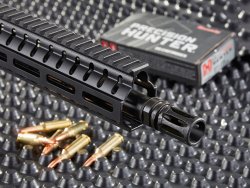
What about 6.5 mm Grendel caliber? After all, this cartridge, introduced around 2003, delivers up to 2,600 joules and can be fired from AR or M4 platforms. At about the same time, the U.S. SOCOM used the 6.8 mm Special Purpose Cartridge (SPC), which is capable of delivering up to 2,400 joules. Its use called for a new bolt and a different magazine in addition to the barrel, with four cartridges less capacity. All of these developments have increased the effective range by a real 100 to 200 meters, depending on the barrel length and the load, but accuracy, terminal ballistics and penetrating power are nowhere near the 7.62x51 mm NATO. There is something else that slows down new developments: numbers. After the .300 AAC Blackout was accepted as a normal, subsonic and frangible variant, it was December 2016 until someone sealed the deal. The Netherlands ordered SIG MXC carbines in .300 AAC Blackout caliber. The Netherlands Maritime Special Operations Forces (NLMARSOF) received a full 195. Insiders call small contracts with special forces "applause business". This pleases the vendor. But their controllers see the high reputation in stark contrast to development costs and certification expenses.
All-round solution: the 6 mm ARC? The values of the 6 mm ARC are convincing. Compared to the 7.62x51 mm NATO, the shooter feels half as much recoil. The M4 weighs about a third less than an AR-10, and only 20 rounds fit in an AR-10 magazine instead of 25 of the 6 mm ARC. If this is fired with a 105-grain HPBT bullet at 200 yards (or about 180 meters), at 100 yards the high shot is about four inches. From 200 to 300 yards, the bullet drops only 20 inches. This should not be much of an issue between 50 to 300 yards. At 400 yards the bullet drop measures a good 50 inches. Only at 500 yards (about 460 meters) about 115 centimeters of compensation are needed to achieve a proper adjustment of the aiming point. These data come from 24" test barrels.
The average M4 or AR-15 barrel with a length of about 15” (just under 40 centimeters) reduces muzzle velocity and the energy of the projectile. Nevertheless, compared to the 6.5 and 6.8 mm competitors, the much lower air resistance makes the 6 mm ARC bullet "fly faster for longer", and it carries slightly more energy to the target at long ranges. These are advantages for military use. But the loads developed during the Next Generation Squad Weapon (NGSW) project with the 6.8-mm bullet specified by the U.S. Army tend to go in the direction of 7.62 NATO. I wonder if solutions such as adding some better-trained marksmen with an AR-10 to the platoons of 5.6-mm armed riflemen will emerge. Russia, with its mixture of Kalashnikov and Dragunov shooters, has already demonstrated this – and the casing the 6 mm ARC is based on was the 7.62x39 mm.
On the shooting range with the Hornady 6 mm ARC cartridge
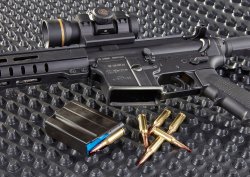
On the sport shooting range, military considerations are of little interest. But the resulting advantages – low recoil, longer range and, above all, better accuracy at long range – are gratefully accepted. Even the first shots allowed a unanimous verdict: the recoil is close to that of the .223 Remington, with a somewhat quieter bang. The CMMG-AR functioned flawlessly with the new cartridge, as expected with mature weapon systems (here can find our some more info on the CMMG rifles in 6 mm ARC). Only the relatively high trigger pull clouded the joy – also the characteristics were not quite convincing due to the long creep. Nothing that could not be improved from the pool of aftermarket parts. The first contact with the new caliber also suffered from the still limited selection of ammo. However, if you set the bar at neat four-shot groups, you can see the high accuracy potential of the 6 mm ARC. We will soon test this exciting topic in more detail in a subsequent article with reloaded ammunition from a repeater.
Test firing with the Hornady CMMG Mk 4 rifle in 6 mm ARC
| Factory cartridges Bullet weight, manufacturer, type: 6 mm ARC | 5-shot group at 100 m (mm) | v0 (m/s) | E0 (J) |
| Hornady 103 gr ELD-X Precision Hunter | 52 (36) | 762 | 1938 |
| Hornady 105 gr BTHP Black | 42 (32) | 758 | 1955 |
| Hornady 108 gr ELD Match | 55 (29) | 748 | 1958 |
Conclusion: the 6 mm ARC Hornady ammunition fired from AR-15 platforms
The ballistic tightrope walk with heavy 5.6 mm bullets for long ranges seems to be coming to a successful end. It remains to be seen which weapons will be available in the future that match the very high standards of the cartridge. But you can see from this test the enormous potential. We will keep you up to date.
Read our article on the Hornady 6 mm cartridge to know more about the cartridge.



